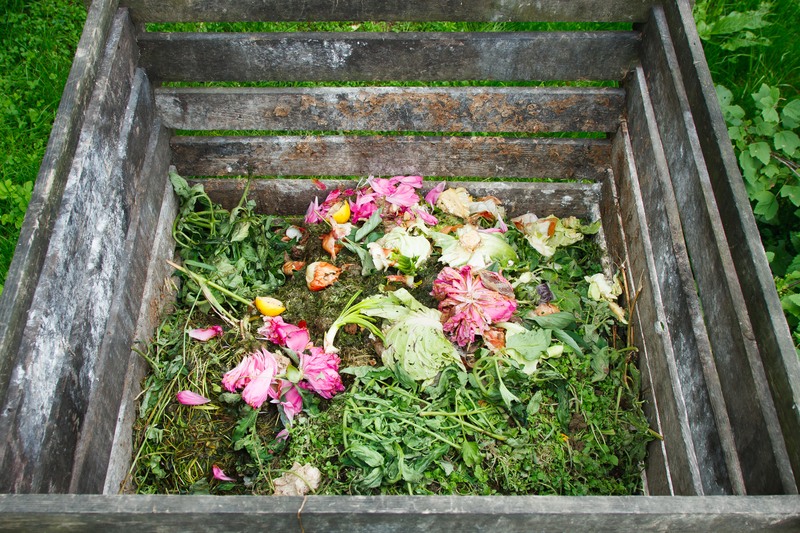Exploring the Purpose and Utility of a Builders Skip
A builders skip is a staple on construction sites and home renovation projects across the United Kingdom and beyond. Despite its commonplace presence, many still wonder about the purpose and utility of a builders skip. In this comprehensive, reader-friendly article, we will delve into the various uses, benefits, regulations, and practicalities of these large, robust waste containers. Whether you are a homeowner planning a renovation or a contractor managing multiple sites, this guide will clarify why a builders skip is a must-have solution for effective waste management.

What is a Builders Skip?
A builders skip refers to a specific size and category of open-topped waste container designed primarily for handling and removing construction and demolition debris. These skips are made from heavy-duty materials to withstand the rigors of harsh on-site environments. Typically, a builder's skip ranges in size from 6 to 8 cubic yards, making it versatile enough for most building projects.
- 6-yard skips: Ideal for small to medium renovation jobs.
- 8-yard skips: Commonly referred to as "builders skips" for larger-scale clearances.
Builders skips are most often rented for fixed periods and frequently delivered to and collected from a site as needed, supporting efficient and streamlined waste disposal.
Why is a Builders Skip Essential?
1. Centralized Waste Collection
The primary purpose of a builders skip is to offer a centralized, secure location for collecting unwanted materials, scrap, and rubbish generated during building projects. Instead of accumulating piles of waste in different spots, which can be hazardous and unsightly, a skip ensures all debris is managed in one controlled location.
2. Site Safety and Organisation
Scattered waste can create tripping hazards, fire risks, and reduce overall efficiency on construction sites. By organizing pile-ups into an allocated builders skip, project managers maintain a cleaner, safer, and more organized working environment--a crucial aspect of modern health and safety regulations.
- Minimizes accident risk for workers and site visitors
- Keeps access routes clear for emergency and construction vehicles
- Enhances overall workflow and productivity
3. Environmental Responsibility
Proper waste disposal is not just about convenience--it's also about environmental responsibility. Reliable skip hire services sort, recycle, and ethically dispose of building waste, helping reduce the construction industry's carbon footprint.
- Sorting and recycling materials such as wood, metal, brick, and concrete
- Diverting large volumes of waste from landfill sites
- Supporting local and national recycling initiatives
Using builders skips is one way the construction industry can meet increasingly strict environmental standards and sustainability goals.
Practical Utility of Builder's Skips
1. Wide Array of Acceptable Materials
One of the greatest utilities of a builder's skip is its versatility in accommodating many different types of waste. Common waste types suitable for disposal in a construction skip include:
- Bricks and rubble
- Soil and clay
- Concrete
- Wood and timber
- Metals and piping
- Plasterboard and plastics
- Packaging and general refuse
It's important to note, however, that specific items such as asbestos, chemicals, electrical appliances, and tyres often require special disposal procedures and should not be placed in a general builders skip.
2. Flexible Placement and Accessibility
A key benefit of hiring a builders skip is the ability to place it nearly anywhere on your site--provided you have the space and required permissions. Skips can often be positioned:
- Within the boundaries of a construction site
- On driveways during home renovations
- On public roads (with a local council permit)
This flexible access ensures workers always have a nearby and accessible place for waste disposal, supporting both safety and efficiency.
3. Cost Efficiency
Opting for a builders skip is usually more cost-effective than making countless trips to the local tip or hiring multiple smaller containers. The one-off hire fee--often including delivery, collection, and disposal--reduces both time and fuel costs, making it an economical choice for large and small projects alike.
How to Select the Right Builders Skip
Choosing the ideal builders skip size and type for your project is essential for maximizing both value and utility. Here's what you must consider:
Assess Project Size and Waste Volume
Estimating how much waste your project will generate is the first step. Overestimating may mean paying for unnecessary capacity, while underestimating could lead to overflowing or needing multiple collections.
- 6-yard skips work for small renovations, bathroom/kitchen refits, and garden clearances.
- 8-yard builders skips are excellent for extensions, major refurbishments, or mid-size commercial projects.
- Larger skips (10-12 cubic yards) may be warranted for commercial and industrial clearances, but check local regulations.
Consider Placement and Permits
If placing the builders skip on public land or a road, you'll need a skip permit from your local council. Check the requirements in advance, and ensure the location avoids blocking access or utilities.
Check for Waste Restrictions
Not all skips can accept all types of waste. Confirm with your skip hire provider about any prohibitions, and organize separate disposal if hazardous materials are involved.
The Process of Hiring a Builders Skip
Securing a builders skip for your project is a straightforward process when partnering with a reputable skip hire company:
- Contact your chosen supplier and outline your project requirements.
- Select the right size skip based on anticipated waste volume.
- Arrange delivery to your site or property, specifying the required dates.
- Ensure the placement location is clear and accessible.
- Fill the skip up to the safe, designated level (not above the "fill line").
- Once the project concludes or the skip is full, contact the supplier for prompt collection and disposal.
Legal and Environmental Regulations for Builders Skips
Skip Permits and Licences
If a builder's skip is placed on public property (including roads or pavements), most UK councils require a valid skip permit. Permits are intended to:
- Ensure skips are safely and legally positioned
- Reduce traffic disruption and maintain access
- Provide accountability for waste disposal
Recycling and Waste Disposal Requirements
Environmental law requires all skip companies to transport and dispose of waste at licensed facilities. Many reputable firms will sort and recycle a significant proportion of the materials collected, aligning with both business sustainability targets and legal obligations.
What NOT to Put in a Builders Skip
As part of responsible waste management, certain hazardous or regulated items are typically prohibited from standard builder's skips:
- Asbestos, chemicals, solvents, or paint
- Batteries and electrical appliances (WEEE waste)
- Gas cylinders and pressurized containers
- Tyres and medical waste
Discuss with your skip hire company about safe disposal alternatives for these materials, to avoid legal repercussions and protect the environment.
The Advantages of Using a Builders Skip for Construction Projects
1. Convenience and Time-Saving
Nothing matches the convenience of having a large, accessible container on-site. Workers spend less time ferrying rubbish off-site, and more time focusing on productive tasks.
2. Site Appearance and Neighbour Relations
A well-managed site using a skip will be tidier and more presentable to the public, neighbours, and potential clients. Reducing mess and fly-tipping improves a company's professional image.
3. Compliance with Health and Safety Standards
UK health and safety regulations require employers to minimize waste hazards wherever practical. Using a builders skip is a core method of maintaining compliance on active sites.
Builders Skips: Not Just for Construction
While the initial purpose of a builders skip was firmly rooted in construction, its utility now spans a range of domestic and commercial scenarios. These include:
- Home renovations and spring cleaning projects
- Garden and landscaping clearances
- Office fit-outs and shop refurbs
- Event clean-ups (fairs, festivals, large outdoor gatherings)
Whenever large volumes of waste are generated, a builders skip provides the answer.

Common Myths and FAQs About Builders Skips
Are All Skips the Same?
No--skips come in varying sizes and are often tailored to specific waste streams. The "builder's skip" label typically applies to robust 6 or 8-yard skips, designed for mixed heavy waste.
Can I Overfill a Skip?
Overfilling is strongly discouraged and illegal. Skips should only be filled to the marked "fill line" for safe transport. Overfilled skips can incur fines, refuse collection, or create road hazards.
Do I Need a Permit?
If the skip is entirely on private land, no permit is necessary. Placement on public roads or property usually requires a permit--confirm the process and costs with your local council and skip hire provider.
Can Builders Skips Be Used for Domestic Projects?
Absolutely--many households use builder's skips for major clear-outs, renovations, and landscaping jobs.
Conclusion: The Enduring Value of Builders Skips
In summary, understanding the purpose and utility of a builders skip goes far beyond simply "getting rid of rubbish." It means embracing safer, more organized, and environmentally conscious work practices in construction and beyond. Builders skips remain essential for any project generating significant waste, saving both time and money while ensuring you meet your legal and ethical responsibilities. With the variety of options available and the growing emphasis on sustainability, choosing the right skip hire partner is your first step to a cleaner, more efficient, and reputable job site.
For expert skip hire tailored to your building or renovation project, always consult local providers to ensure compliance, cost-effectiveness, and the highest standards of safety and sustainability.